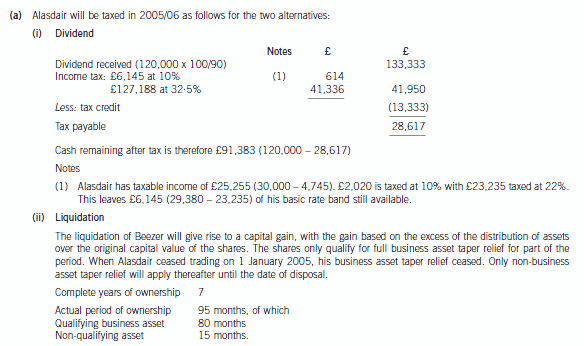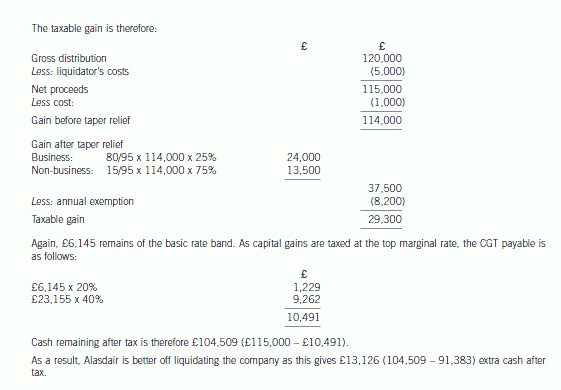ACCA证书含金量到底有多高?
发布时间:2019-07-20
2019年ACCA上半年考试已经结束,下半年考试正式计进入备考期,很多小伙在刚经历完上班年的考的,马上又要进入下半年新一轮的备考,这中间的疲惫相信很多正在备考或者已经考过的人都感同身受,很多考生会在这个阶段质疑说ACCA含金量真的有这么高吗?ACCA证书对求职就业、出国留学、未来发展有什么帮助吗?大这样努力考取这个证书真的是否有意义了?为此小编特地整理了如下内容。
一、ACCA的含金量
ACCA在通关部分科目后,可以申请英国OBU的学士学位和UOL的硕士学位,可以为自己的简历镀金,如果有想要出国留学或者工作都是有一定帮助的,获得学位后,还可以直接申请英联邦国家的硕博研究生。
ACCA在全球有180多个国家认可,被称为国际财会界的"通行证"。现拥有7,200家认可雇主,在中国有近千家签约就业企业,主要为四大会计师事务所、跨国银行、世界500强企业和国际国内大型知名企业。
据ACCA年度薪资调查报告显示,应届生通关ACCA后最低年薪基本不会低于15万。ACCA会员年薪达到30万至50万人民币之间比例高达52%,ACCA会员收入在50万至100万人民币之间比例高达21%,受访会员最高年薪超过200万人民币。
二、ACCA考试优势
ACCA考试周期短:
报名时间分为4个考季,3/6/9/12月,一年可以考4次。
ACCA报考条件低:
1、门槛不高,报考并无专业限制
2、大专学历即可报名
3、在校期间即可参加考试,毕业就拿证
4、无财会背景人士通过学习均可以通过
无论你是财会专业还是非财会专业,如果你想在财会行业有好的发展前景,就去考一个能够带你达到高起点、高薪资,真正有用的“万能通行证”。
三、ACCA就业前景
那考下ACCA之后,能去哪些企业~
1.四大会计师事务所
这个毫无疑问,ACCA这张素有“四大通行证”之称的证书,可谓是通往财会行业权威——四大的绝对加分项。但是,ACCAer可不止四大这一个选择哦~
2.国内会计师事务所
虽然,国际四大一直是财会人心中的圣地,但是近几年来,国内事务所的发展迅猛,收入和排名也随之发生了翻天覆地的变化。今年,身为本土八大的致同挤进前四!拿下ACCA,八大的面试官也会对你青睐有加。
3.投资银行
除了高盛、摩根大通、汇丰这些在国际上赫赫有名的国际银行外,国内的四大银行,也能给ACCA持证人们提供一个很好的施展平台。
4.金融机构
都说,金融、财会不分家,在ACCA的学习大军中,也不乏在金融领域打拼多年的从业者。因为金融工作中涉及到的财务报表、IPO估值等都需要用到财会的内容,所以ACCA可以说是对口证书。
5.500强外企
毫无疑问,ACCA这张起源于英国,适用国际会计准则的高端证书,绝对可以称得上是通往外企的“黄金文凭”。
综合以上就是对于上述ACCA问题的解答了,希望对于各位小伙伴有帮助,小编将持续更新相关内容。
下面小编为大家准备了 ACCA考试 的相关考题,供大家学习参考。
(b) Historically, all owned premises have been measured at cost depreciated over 10 to 50 years. The management
board has decided to revalue these premises for the year ended 30 September 2005. At the balance sheet date
two properties had been revalued by a total of $1·7 million. Another 15 properties have since been revalued by
$5·4 million and there remain a further three properties which are expected to be revalued during 2006. A
revaluation surplus of $7·1 million has been credited to equity. (7 marks)
Required:
For each of the above issues:
(i) comment on the matters that you should consider; and
(ii) state the audit evidence that you should expect to find,
in undertaking your review of the audit working papers and financial statements of Albreda Co for the year ended
30 September 2005.
NOTE: The mark allocation is shown against each of the three issues.
(b) Revaluation of owned premises
(i) Matters
■ The revaluations are clearly material as $1·7 million, $5·4 million and $7·1 million represent 5·5% , 17·6% and
23·1% of total assets, respectively.
■ The change in accounting policy, from a cost model to a revaluation model, should be accounted for in accordance
with IAS 16 ‘Property, Plant and Equipment’ (i.e. as a revaluation).
Tutorial note: IAS 8 ‘Accounting Policies, Changes in Accounting Estimates and Errors’ does not apply to the initial
application of a policy to revalue assets in accordance with IAS 16.
■ The basis on which the valuations have been carried out, for example, market-based fair value (IAS 16).
■ Independence, qualifications and expertise of valuer(s).
■ IAS 16 does not permit the selective revaluation of assets thus the whole class of premises should have been
revalued.
■ The valuations of properties after the year end are adjusting events (i.e. providing additional evidence of conditions
existing at the year end) per IAS 10 ‘Events After the Balance Sheet Date’.
Tutorial note: It is ‘now’ still less than three months after the year end so these valuations can reasonably be
expected to reflect year-end values.
■ If $5·4 million is a net amount of surpluses and deficits it should be grossed up so that the credit to equity reflects
the sum of the surpluses with any deficits being expensed through profit and loss (IAS 36 ‘Impairment of Assets’).
■ The revaluation exercise is incomplete. If the revaluations on the remaining three properties are expected to be
material and cannot be reasonably estimated for inclusion in the financial statements for the year ended
30 September 2005 perhaps the change in policy should be deferred for a year.
■ Depreciation for the year should have been calculated on cost as usual to establish carrying amount before
revaluation.
■ Any premises held under finance leases should be similarly revalued.
(ii) Audit evidence
■ A schedule of depreciated cost of owned premises extracted from the non-current asset register.
■ Calculation of difference between valuation and depreciated cost by property. Separate summation of surpluses
and deficits.
■ Copy of valuation certificate for each property.
■ Physical inspection of properties with largest surpluses (including the two valued before the year end) to confirm
condition.
■ Extracts from local property guides/magazines indicating a range of values of similarly styled/sized properties.
■ Separate presentation of the revaluation surpluses (gross) in:
– the statement of changes in equity; and
– reconciliation of carrying amount at the beginning and end of the period.
■ IAS 16 disclosures in the notes to the financial statements including:
– the effective date of revaluation;
– whether an independent valuer was involved;
– the methods and significant assumptions applied in estimating fair values; and
– the carrying amount that would have been recognised under the cost model.
6 Alasdair, aged 42, is single. He is considering investing in property, as he has heard that this represents a good
investment. In order to raise the funds to buy the property, he wants to extract cash from his personal company, Beezer
Limited, whose year end is 31 December.
Beezer Limited was formed on 1 May 1998 with £1,000 of capital issued as 1,000 £1 ordinary shares, and traded
until 1 January 2005 when Alasdair sold the trade and related assets. The company’s only asset is cash of
£120,000. Alasdair wants to extract this cash from the company with the minimum amount of tax payable. He is
considering either, paying himself a dividend of £120,000, on 31 March 2006, after which the company would have
no assets and be wound up or, leaving the cash in the company and then liquidating the company. Costs of liquidation
of £5,000 would then be incurred.
Since Beezer Limited ceased trading, Alasdair has been taken on as a partner at a marketing firm, Gallus & Co. He
estimates his profit share for the year of assessment 2005/06 will be £30,000. He has not made any capital disposals
in the current tax year.
Alasdair wishes to reinvest the cash extracted from Beezer Limited in property but is not sure whether he should invest
directly in residential or commercial property, or do so via some form. of collective investment. He is aware that Gallus
& Co are looking to rent a new warehouse which could be bought for £200,000. Alasdair thinks that he may be able
to buy the warehouse himself and lease it to his firm, but only if he can borrow the additional money to buy the
property.
Alasdair has a 25% shareholding in another company, Glaikit Limited, whose year end is 31 March. The remaining
shares in this company are held by his friend, Gill. Alasdair is considering borrowing £15,000 from Glaikit Limited
on 1 January 2006. He does not intend to pay any interest on the loan, which is likely to be written off some time
in 2007. Alasdair does not have any connection with Glaikit Limited other than his shareholding.
Required:
(a) Advise Alasdair whether or not a dividend payment will result in a higher after-tax cash sum than the
liquidation of Beezer Limited. Assume that either the dividend would be paid on 31 March 2006 or the
liquidation would take place on 31 March 2006. (9 marks)
Assume that Beezer Limited has always paid corporation tax at or above the small companies rate of 19%
and that the tax rates and allowances for 2004/05 apply throughout this part.


20 Which of the following events occurring after the balance sheet date are classified as adjusting, if material?
1 The sale of inventories valued at cost at the balance sheet date for a figure in excess of cost.
2 A valuation of land and buildings providing evidence of an impairment in value at the year end.
3 The issue of shares and loan notes.
4 The insolvency of a customer with a balance outstanding at the year end.
A 1 and 3
B 2 and 4
C 2 and 3
D 1 and 4
声明:本文内容由互联网用户自发贡献自行上传,本网站不拥有所有权,未作人工编辑处理,也不承担相关法律责任。如果您发现有涉嫌版权的内容,欢迎发送邮件至:contact@51tk.com 进行举报,并提供相关证据,工作人员会在5个工作日内联系你,一经查实,本站将立刻删除涉嫌侵权内容。
- 2020-01-08
- 2019-07-20
- 2019-07-20
- 2020-01-08
- 2019-07-20
- 2020-09-04
- 2021-02-25
- 2020-01-08
- 2020-01-08
- 2020-02-29
- 2020-01-08
- 2019-07-20
- 2020-01-08
- 2019-07-20
- 2020-01-08
- 2020-01-08
- 2020-01-08
- 2020-09-04
- 2020-02-29
- 2019-07-20
- 2020-03-08
- 2021-04-09
- 2020-02-29
- 2019-07-20
- 2019-12-06
- 2019-07-20
- 2021-05-23
- 2020-02-29
- 2020-01-08
- 2020-09-04